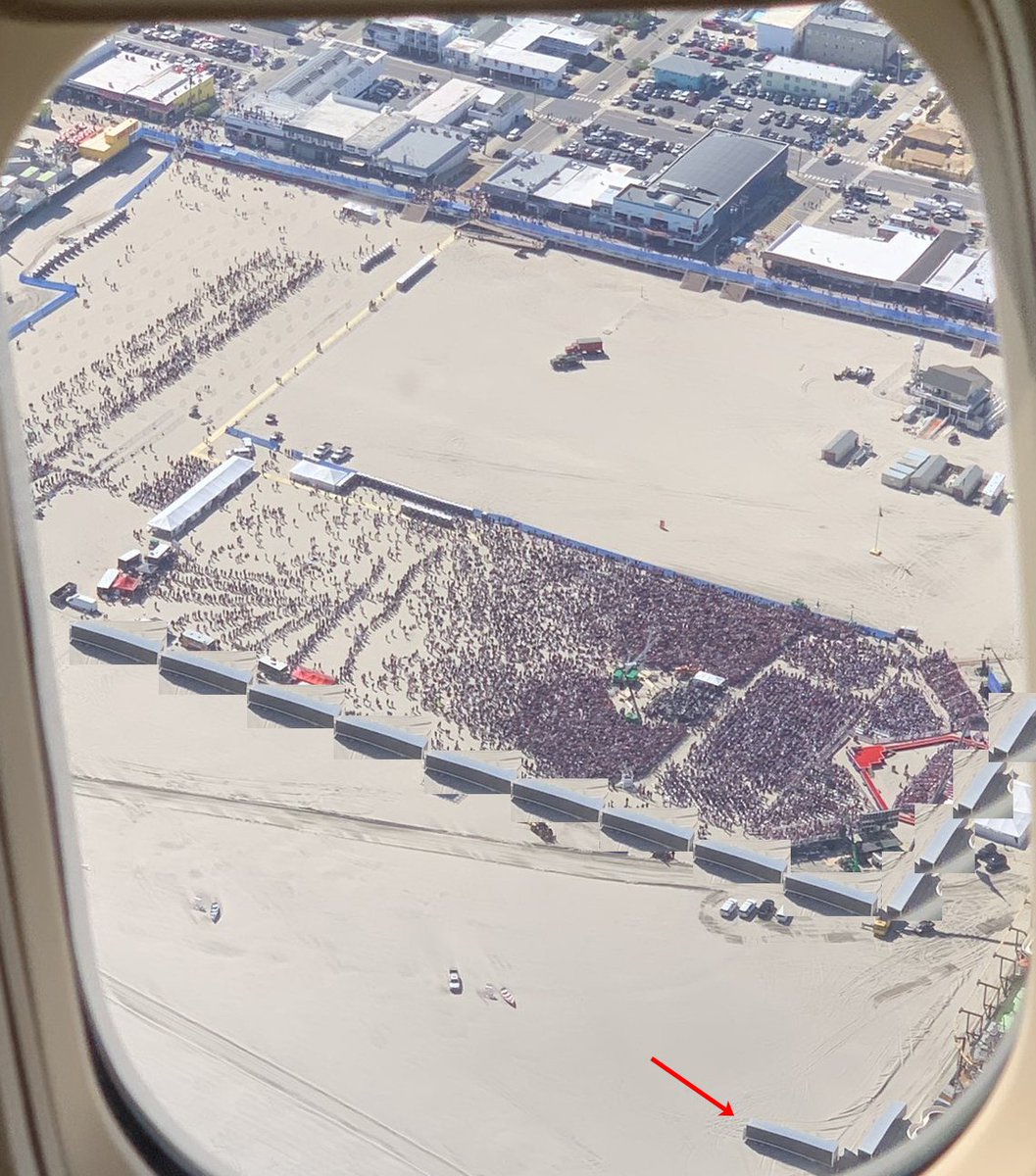Let's see...Trump is 6' 3" tall. Putting him sideways it looks like the stage is perhaps 15' long, but I'll be generous and call it 16'. It also looks like it's only 6' deep but I'll call it 8' for the heck of it. 

So that's ~92 stages or so...call it an even 100 to account for the stragglers at the outer edges.
That's 128 sq. feet x 100 = 12,800 sq. feet. Let's assume they're all tightly packed.
Again, in a tightly-packed crowd the avg. adult takes up 4.5 sq. ft.
poynter.org/reporting-edit…

That's 128 sq. feet x 100 = 12,800 sq. feet. Let's assume they're all tightly packed.
Again, in a tightly-packed crowd the avg. adult takes up 4.5 sq. ft.
poynter.org/reporting-edit…

12,800 / 4.5 = 2,844 people in attendance when this photo was taken. Let's be generous and round it up to an even 3,000 people.
Trump had already taken the stage at this point, so you can't argue that it was taken before most people had arrived. I'm willing to concede that there may have been some latecomers. Let's call it perhaps 4,000 attendees at its peak.
And again, this assumes that 100% of the crowd was "tightly packed" which it clearly isn't.
It could easily be as few as ~1,500 or so.
poynter.org/reporting-edit…

It could easily be as few as ~1,500 or so.
poynter.org/reporting-edit…

UPDATE: I'm told that standard stage risers are 4' x 8' and they can obviously be attached to each other. It definitely looks like the stage is twice as wide as it is deep, so yeah, that'd be 16' x 8'.




So, yeah…somewhere between 1,500 - 4,000 at its peak, I’d say.
• • •
Missing some Tweet in this thread? You can try to
force a refresh







